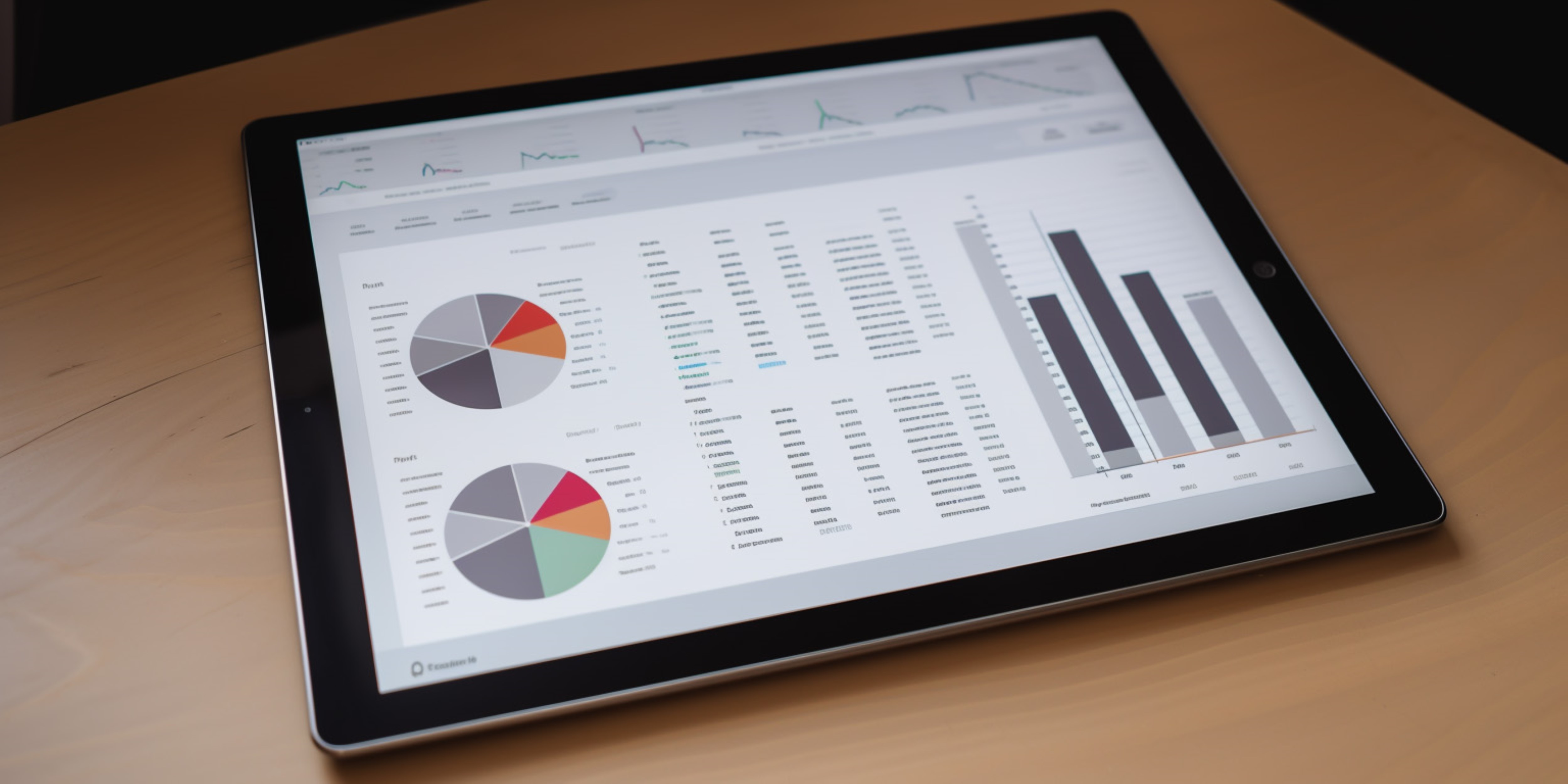Measuring what matters: A practical guide to data ROI


Book a free consultation now!
In today's world, data has emerged as the most valuable asset of the digital age. Intangible assets—including data—now account for 90% of the market value of S&P 500 companies. For technology giants and data-driven enterprises, data assets have outweighed physical resources, becoming the primary driver of market valuation and competitive advantage.
This year alone, an estimated 463 zettabytes of data will be generated daily—yes, that's a number with 21 zeros—representing a market value of $229.4 billion.
However, poor data quality and the lack of a strategic approach to data can be extremely costly. That's why it's essential for organizations to invest not only in acquiring and managing data assets, but also in measuring and optimizing their data return on investment (ROI) to ensure these digital resources translate into tangible business value.
From data volume to data value
Understanding the fundamentals of data value is the first step toward maximizing its potential. While the daily creation of data demonstrates the sheer volume of available data, not all data carries equal worth. The actual value of any dataset depends on factors such as its quality, uniqueness, relevance to business objectives, and potential for generating actionable insights. This is where data valuation becomes critical—organizations need systematic approaches to determine how to value data, both as an asset on their balance sheet and as a driver of business outcomes. Before diving into data ROI calculations, organizations must first answer what is a data value for their specific assets and understand how to properly value the data assets themselves.
Data valuation techniques and methodologies
The choice of the method depends on several key factors: the organization's primary use case for the data, the maturity of relevant data markets, the availability of comparable datasets, the organization's capability to track and attribute specific business outcomes to data assets etc.
The following section outlines the most commonly used data valuation techniques and their practical applications.
Cost-based valuation
The cost-based valuation method estimates data value by calculating the total expenses required to acquire, process, and maintain data assets. This approach considers production costs (collection, cleansing, storage, processing), replacement costs (recreating lost data), historical costs (original acquisition expenses) and potential loss impact (financial consequences of data breaches or downtime).
For example, a retail company might value their customer database at $2 million based on the combined costs of: $800,000 in historical data collection through surveys and transactions, $600,000 in annual processing and cleansing labor, $400,000 in storage infrastructure and $200,000 in ongoing maintenance.
Market-based valuation
The market-based data valuation method determines data value by analyzing external market prices for comparable data assets, including similar dataset sales, licensing fee benchmarks and third-party data purchase equivalents. This approach examines comparable sales of similar datasets, anticipated income from potential data licensing and valuations assigned to data assets during acquisitions.
For example, a financial services company might value their credit risk database at $8 million after researching that similar financial datasets sell for $200-500 per enterprise customer record in data marketplaces, and their database contains 20,000 high-quality records with five years of transaction history. They also reference recent fintech acquisitions where companies were valued at 4-6x their annual data licensing revenue.
Income/economic value-based valuation
The income-based valuation method assesses data value by measuring its direct contribution to organizational financial performance through revenue generation, cost savings and risk mitigation. This approach uses techniques like comparing business outcomes with and without the data asset, estimating savings from not licensing third-party data and isolating cash flows attributable specifically to data assets.
For instance, an e-commerce company might value their customer behavior analytics dataset $12 million after determining that their recommendation engine powered by this data generates an additional $3 million in annual revenue, reduces customer acquisition costs by $800,000 yearly, and prevents $500,000 in annual losses from fraud detection. Applied over a five-year period with appropriate discount rates, this data-driven value stream justifies the higher valuation.
What is data ROI?
While data valuation focuses on determining the inherent worth of data as an asset, measuring data ROI takes a broader view by evaluating the financial returns from your entire data ecosystem. Understanding how to value individual datasets provides the foundation for calculating whether your investments in data platforms, analytics tools and data teams are actually paying off. This shift from asset valuation to investment performance measurement is crucial—you might have valuable data, but are you generating adequate returns from the infrastructure and resources required to collect, process and leverage that data?
Data ROI (Return on Investment) is a financial metric that measures the business value generated from investments in data infrastructure, analytics platforms, data management systems and personnel, calculated by comparing the quantifiable benefits derived from data initiatives against the total costs of acquiring, processing, storing and maintaining data assets.
In simple words, it is essentially how much money you make back from investing in data. Unlike regular ROI which shows direct returns from equipment or inventory purchases, data ROI measures how much financial value a business gets back from investing in data tools and analytics. Data ROI is harder to calculate than ROI because it creates indirect benefits like better decision-making, risk reduction and improved efficiency across multiple departments over time.
10 reasons why calculate data ROI
No one needs to be convinced that data is valuable in today's business landscape—organizations across every industry recognize data as a critical asset for competitive advantage. However, calculating data ROI is almost as crucial as the data itself, providing the measurable proof needed to sustain investments, optimize strategies and demonstrate business impact. Here is why:
1. Investment decision justification
Organizations need to demonstrate the business case for data initiatives to secure funding and executive buy-in.
2. Resource allocation optimization
Companies must identify which data projects deliver the highest returns and prioritize budget accordingly.
3. Performance measurement
Businesses require tracking mechanisms to assess whether data investments are meeting expected financial outcomes and business objectives.
4. Investment option comparison
Organizations benefit from evaluating different data platforms, tools, or strategies to determine the most cost-effective approach.
5. Business value demonstration
Stakeholders need clear evidence of how data initiatives contribute to revenue growth, cost savings, and operational efficiency.
6. Improvement opportunity identification
Teams must pinpoint areas where data investments are underperforming and need optimization.
7. Strategic planning support
Leadership requires informed decision-making capabilities for scaling data operations or expanding into new data-driven initiatives.
8. Accountability establishment
Organizations need measurable targets and benchmarks for data teams and leadership to track progress.
9. Risk management
Companies must assess whether data investments are delivering sufficient returns to justify continued spending.
10. Continuous optimization
Organizations benefit from establishing feedback loops to refine data strategies and improve future investment decisions.
Data ROI formula
Below you will find a formula that helps organizations calculate the financial return from their data investments by comparing measurable business benefits against the total costs of data infrastructure and operations. This formula enables organizations to measure ROI data analytics initiatives and justify continued investment in analytical capabilities.
Formula: Data ROI = (Data-driven business value - total data investment costs) / total data investment costs × 100
Key components:
- Data-driven business value: revenue increases, cost reductions, efficiency gains, risk mitigation and competitive advantages attributable to data initiatives
- Total data investment costs: platform licensing, infrastructure, personnel, training, maintenance, storage and operational expenses
- Attribution period: Timeframe over which data benefits are measured and tracked
Key metrics for data platform performance
Measuring data platform ROI requires monitoring both quantifiable financial outcomes and harder-to-measure operational improvements that ultimately drive business value. Successful organizations track metrics across both categories to get a complete picture of their data platform's performance.
Tangible financial outcomes
These metrics have a direct, measurable financial impact and can be easily translated into dollar values that directly contribute to ROI calculations:
- Revenue growth
- Cost savings from automation
- Reduced third-party data dependencies
- Fraud prevention savings
- Inventory optimization
Intangible strategic benefits
While harder to quantify than for example direct financial returns, these strategic benefits can still be tracked through proxy metrics that indicate performance improvements:
- Decision-making speed
- Data accessibility
- Data quality and trust
- Innovation velocity
- Regulatory compliance
The key is establishing baseline measurements before platform implementation and continuously monitoring these metrics to demonstrate ongoing value creation and identify optimization opportunities. But how does data become business value? Let's explore how platform capabilities like data quality, integration and accessibility translate into measurable business outcomes.
How data performance creates business value
The answer lies in understanding the fundamental pillars of data platform performance that actually translate into measurable business outcomes. Three critical factors determine whether your data investments will deliver sustainable ROI: data quality, integration capabilities and accessibility.
Data quality forms the foundation of all value creation. Clean, accurate data reduces operational friction by eliminating time-consuming error correction and reconciliation processes, directly improving data quality ROI. Quality data creates a multiplier effect—every downstream process, from fraud detection to personalization algorithms, performs better with reliable inputs. This directly impacts tangible metrics like fraud prevention savings and cost reductions from automation, while building the trust necessary for confident decision-making across the organization.
Data integration breaks down organizational silos, enabling cross-functional insights that drive both revenue growth and operational efficiency. When CRM, ERP and IoT data feeds transform into a unified platform, companies gain holistic visibility previously impossible with fragmented systems. Integrated data accelerates innovation velocity by providing richer datasets for AI/ML development, demonstrating strong data integration ROI through faster, more comprehensive customer experiences. The cost of maintaining data silos far exceeds the investment in proper integration infrastructure.
Data accessibility democratizes insights across the organization, dramatically improving decision-making speed. Self-service capabilities reduce bottlenecks by enabling business users to access data without depending on technical teams for every query. This accessibility directly correlates with higher user satisfaction and innovation velocity, as insights can be rapidly translated into actionable strategies. When employees can easily discover, understand and use relevant data, the entire organization becomes more agile and responsive to market opportunities.
Tracking and measuring data platform ROI
To make data platform ROI more than a theoretical exercise, organizations must embed measurement into the lifecycle of their data initiatives. This means establishing performance goals before implementation, tracking improvements consistently and linking platform capabilities to actual business outcomes.
Step-by-step approach to measuring data platform ROI:
1. Define business outcomes
Identify the goals your data platform supports: increased sales conversion, operational efficiency, faster product launches or reduced compliance risk.
2. Map data products to use cases
Link specific data products (dashboards, APIs, ML models) to business processes or teams that deal with them. This attribution is crucial for assigning value.
3. Establish baselines and proxy metrics
For intangible benefits like decision speed or trust in data, establish proxy indicators: average reporting time, data quality incident frequency, number of data access requests, frequency of manual overrides, etc.
4. Track adoption and utilization
Measure active users, query volume, frequency of data product access—these reflect actual use and value generation potential.
5. Quantify impact
Use A/B testing, pre/post comparisons or pilot programs to isolate the financial impact of specific data assets: revenue uplift, reduced downtime, lower vendor costs.
6. Calculate cumulative ROI over time
Measure the total cost of ownership—platform, cloud storage, tools—and compare to estimated business benefits. Track year over year to validate strategic investments.
7. Feed learnings back into strategy
Use ROI insights to optimize future data investments, prioritize high-impact use cases, and communicate with stakeholders.
Sustaining data ROI
Data ROI measurement is not a one-time calculation but an ongoing strategic discipline requiring continuous monitoring and adaptation. As data platforms evolve through technological advances and changing business requirements, the metrics used to measure ROI must evolve alongside them.
This demands strategic management that actively maintains and grows value over time through robust governance frameworks that embed ROI measurement into regular business reviews and strategic decision-making processes. The most successful organizations treat data ROI measurement as a core business practice, integrating it into their operational DNA rather than treating it as a periodic exercise.
To achieve sustainable data ROI, organizations need experienced partners who understand both the technical complexities of data platforms and the strategic nuances of value creation. Partnering with experts like RST ensures that your valuable data investments continue delivering measurable business value as your organization and technology landscape evolve. Contact RST today to discuss how we can help you maximize and sustain your data ROI.


